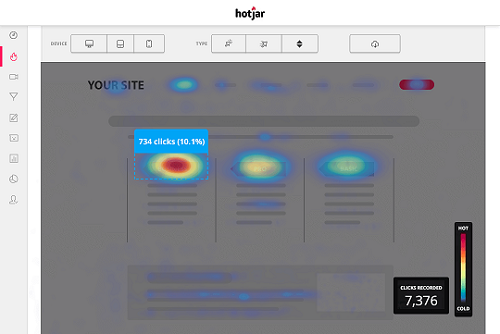Can Social Media be used as Evidence in Court?

The closing line of Season 2 American Vandal demonstrates the realities of social media in a teenager’s life: ‘We’re not the worst generation. We’re just the most exposed.' Their opinions, beliefs, interests, social network, locations, timings, secrets, and reputation are all on a 5.5-inch screen. American Vandal is Netflix’s popular true-crime high school mockumentary, putting the spotlight on social media as a means of evidence in criminal investigations. This TV show is filled with humorous, very accurate examples of how social media can be analysed to reveal crucial evidence. One example is the investigation thread into the notorious 2017 iOS glitch where the letter ‘I’ would show up as an ‘A[?]’ on all Apple devices.
 |
| nymag.com |
Furthermore, the main characters, Peter (Tyler Alvarez) and Sam (Griffin Gluck), posing as investigators, scrutinise the use of punctuation after emojis in Instagram captions. The attention to detail regarding the use of social media is mesmerising on this show.
 |
| slate.com |
Twitter: @tyleralvarez & @griffingluck
American Vandal poses another question: Can social media be used as evidence in a courtroom? The simple answer is yes. This must be right given social media’s prevalence in our society. Such evidence can be very useful with regards to proving a party’s mental state or that an individual was in a said location at a specified time. At its most extreme, this evidence can even help to stop a future crime. For example, a ninth-grade male student was placed into custody after threats towards Permian High School were found on his social media. One high-profile example of where social media can track down location is Gabby Petito's murder case. She chronicled her travel journey with her boyfriend, Brian Laundrie, who is now a suspect in this murder as well as a fugitive. One of Petito's YouTube videos revealed the location of her van close to the period she went missing; this is where her remains were also found.
In the personal injury Pennsylvanian case of Largent v. Reed, the claimant claimed that a recent accident had left her with severe physical and mental injuries. However, during the case, the defendants presented post-accident photos posted by the claimant on her Facebook account. These photos revealed that the claimant was feeling well enough to engage in her daily activities, attend the gym and, generally, enjoy her life. Therefore, the court ordered the claimant to hand over her Facebook login information for further inspection. In fact, this is in line with the Department for Work and Pensions powers of being able to monitor a benefits claimant's social media profile if there are ‘reasonable grounds to suspect fraud against the benefit system’.

Another example of social media evidence entering a courtroom was when the Portsmouth Magistrate’s Court admitted 143 abusive messages of an ex-partner dispatched via WhatsApp. Defamation cases are increasingly being brought against ordinary people, the ‘keyboard warriors". For instance, in the case of Aslani v Sobierajska, a social media influencer complained about her ‘Brazilian butt lift’ a few times (on her Instagram as well as on RealSelf, a review site), claiming that the plastic surgeon left her disfigured. The surgeon sued in the UK in a defamation claim and was awarded damages of £40,000.

Nevertheless, there are some complications when using social media as a means of evidence during litigation. Compared to a voicemail and a letter, authenticating social media evidence can be challenging due to the ease at which an account can be falsified or accessed by an imposter. Therefore, as a rule of thumb, lawyers aim to ‘over-authenticate’ this type of evidence.
There are numerous ways of authenticating evidence. One way is to check whether the social media information, revealed via photos, friends and location, is consistent with a witness statement about the account author. Does this account author write, speak and behave in the way the witness claims? Interestingly, in the case of Burgess v. State, a Myspace account bearing the name ‘Oops’ was authenticated as such through the defendant’s sister’s statement that the defendant’s nickname was’ Oops’.
Another authentication method is by corroborating whether the asserted account author's offline activities correspond to events described on their social media. This can be a very persuasive authentication technique. For example, if the author met an individual after arranging a meet up on their social media then this may provide strong evidence to demonstrate that the account author is in fact the claimed author.
At this point, you may be thinking: surely, social media evidence can be abused? With the advancement of technology, more complicated challenges face court proceedings. We live in a world where Barack Obama’s videos can be collated to teach an artificial intelligence program to turn audio clips into realistic, lip-synced videos. Given the fact that these videos are not real, they are called ‘deepfakes’.
 |
| police1.com |
The scope for this technology is such that photorealistic images of people who do not exist can be created and public figures’ reputation can be damaged. Meanwhile, Facebook estimates that 5% of its accounts are fake ‘bot’ accounts.
 |
| irishtimes.com |
In our social media-driven society, admitting this form of evidence to the courts is inevitable. Nevertheless, the growing opportunities to present forgeries in a more convincing way than ever before cannot be undervalued. Rest assured, as these challenges augment, processes to accurately check for data breaches, evidence tampering and deciphering the presence of bot accounts will also develop. One such example is SybilEdge, which can detect fake Facebook accounts that are less than a week old and have fewer than 20 friend requests.
Related Articles:
Dilara Devin
A recent law graduate, with a passion for writing, reading and all things media. A lover of music and have a growing interest in cooking.
LinkedIn: Dilara Devin
Can Social Media be used as Evidence in Court?
 Reviewed by Dilara Devin
on
Wednesday, October 06, 2021
Rating:
Reviewed by Dilara Devin
on
Wednesday, October 06, 2021
Rating:
 Reviewed by Dilara Devin
on
Wednesday, October 06, 2021
Rating:
Reviewed by Dilara Devin
on
Wednesday, October 06, 2021
Rating:














 Entrepreneur, international speaker on Social Media Marketing. First one in the UK to write and speak in conferences about Twitter as a marketing tool. Consultant to Corporate Companies, Government Organizations, Marketing Managers and Business Owners.
Entrepreneur, international speaker on Social Media Marketing. First one in the UK to write and speak in conferences about Twitter as a marketing tool. Consultant to Corporate Companies, Government Organizations, Marketing Managers and Business Owners. Aspiring novelist with a passion for fantasy and crime thrillers. He hopes to one day drop that 'aspiring' prefix. He started as a writer and soon after he was made Executive Editor and Manager of the team at Social Songbird. A position he held for 5 years.
Aspiring novelist with a passion for fantasy and crime thrillers. He hopes to one day drop that 'aspiring' prefix. He started as a writer and soon after he was made Executive Editor and Manager of the team at Social Songbird. A position he held for 5 years. Musician, audio technician, professional tutor and a Cambridge university English student. Interested in writing, politics and obsessed with reading.
Musician, audio technician, professional tutor and a Cambridge university English student. Interested in writing, politics and obsessed with reading. Recently graduated with a BA in English Literature from the University of Exeter, and he is about to study an MA in Journalism at the University of Sheffield. He is an aspiring journalist and novelist; in his free time he enjoys playing chess, listening to music and taking long walks through nature.
Recently graduated with a BA in English Literature from the University of Exeter, and he is about to study an MA in Journalism at the University of Sheffield. He is an aspiring journalist and novelist; in his free time he enjoys playing chess, listening to music and taking long walks through nature. Lucy is an undergraduate BSc Politics and International Relations student at the London School of Economics and Political Science.
Lucy is an undergraduate BSc Politics and International Relations student at the London School of Economics and Political Science. Anna Coopey is a 4th year UG student in Classics at the University of St Andrews in Scotland. She is a keen writer and researcher on a number of topics, varying from Modern Greek literature to revolutionary theory.
Anna Coopey is a 4th year UG student in Classics at the University of St Andrews in Scotland. She is a keen writer and researcher on a number of topics, varying from Modern Greek literature to revolutionary theory.
